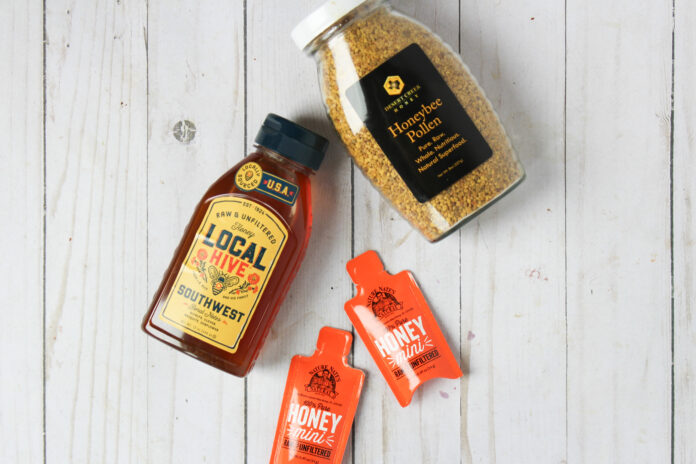By United Supermarkets Nutrition Team
United Supermarkets’ Lifestyle Desk
With Spring flowers in full bloom the bees will soon be buzzing all around. The bees have not only been busy in the garden with Spring blooms, they have also made it on to our shelves year round though!
With honey and bee pollen galore the aisles are buzzing with delicious flavors from local to across the country. Honey and bee pollen are both delicious and nutritious. So, let’s talk about why you should add some to your cart the next time you shop!
Honey is a sweet liquid made by bees through using the nectar of flowering plants. Honey is largely made up of sugar but also contains vitamins, minerals, antioxidants, and zinc. Benefits associated with honey include reduction of inflammation, cough suppression and wound care. These benefits date back to ancient times and have been gaining more research as it grows in popularity.
A few great, and easy ways to incorporate honey into your diet include stirring them into teas, substituting it in baked goods, drizzled on top of things, stirred in dressings and sauces to balance out heat and acidity. There are many different types of honey from raw to manuka and different grades as well that change the flavor profile.
While we won’t dive into all of the different types here it is important to do your research ahead of time and try different ones. We suggest starting with local Texas honeys since that’s where there might be some additional benefits for allergies since bees are pollinating plants that are in that area.
Switching over to another bee product, bee pollen is made up of saliva, nectar, and plant pollen. More in depth, it is a mixture of flower pollen, nectar, enzymes, honey, wax and bee secretions. Since pollen can come from different plants including buckwheat and maize the makeup of pollen can vary depending on the region it is sourced, this is why we suggest trying your local honey first.
Pollen is made up of up to 50% complex carbohydrates but also includes other components such as: lipids, proteins, sugar, vitamin C, phytochemicals, flavonoids, and over 250 other active substances. Some of the health benefits that have been associated with bee pollen include decreased inflammation, and easement of premenstrual syndromes.
While it’s not a cure all, it definitely is something that is an easy add in to try. Some animal studies also found bee pollen improved wound healing, promoted immunity and increased longevity. Great ways to incorporate bee pollen into your diet are including it as garnish in your yogurts, chia puddings, acai bowls or smoothies.
There is also a little bit of research behind linking bee pollen to help with allergy symptoms if you can start slowly and then build up a tolerance.
Chicken Basil Pear Salad (found on HappyAndNourished.com)
What You Need
1 lb. Pulled Rotisserie Chicken
1 medium Pear
1/2 c. Basil
1 head Lettuce
1/2 c. Walnuts
1 Lemon, juiced
3 tsp. Honey
4 Tbsp. Olive Oil
How It’s Made
1. Slice pear
2. Tear basil in rough pieces
3. Chop lettuce
4. Chop walnuts to desired size
5. Shred chicken into bite sized pieces
6. Mix together lemon juice, honey and olive oil and drizzle on to salad as desired




